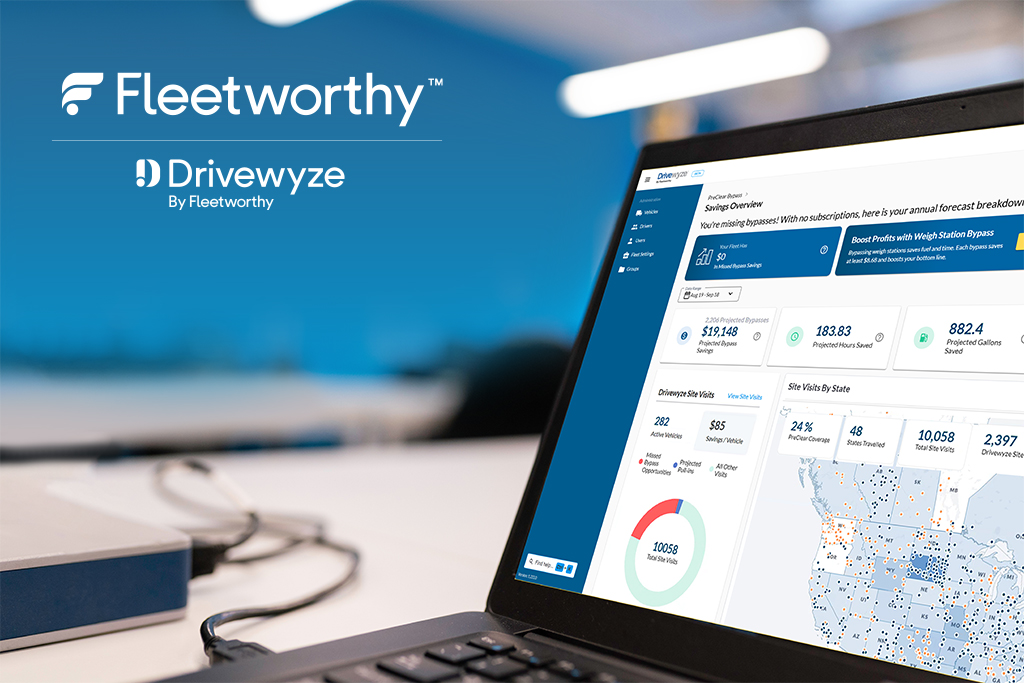Did you know that driver fatigue contributes to nearly 13% of all commercial vehicle crashes? The FMCSA Hours of Service (HOS) regulations aim to prevent these accidents by ensuring drivers get the rest they need.
The Federal Motor Carrier Safety Administration (FMCSA) Hours of Service regulations help to promote safety on roadways. These rules are specifically designed to prevent driver fatigue—a leading cause of accidents involving commercial motor vehicles (CMVs)—and to ensure that drivers remain alert and capable of safely operating their vehicles. HOS regulations govern the number of hours a driver can operate a vehicle, the breaks they must take, and the cumulative hours they can work within a given time frame.
HOS regulations are grounded in extensive research on the relationship between driver fatigue and accidents. Fatigue significantly impairs a driver’s reaction times, decision-making abilities, and overall alertness, making it one of the leading causes of crashes involving CMVs.
The benefits of FMCSA’s HOS regulations include:
- Promoting Road Safety
- Limiting driving hours reduces the risk of fatigue-related accidents, helping to safeguard both commercial drivers and the public.
- By requiring mandatory rest breaks and off-duty periods, HOS regulations ensure that drivers are well-rested and alert while operating their vehicles.
- Preventing Burnout
- The rules strike a balance between work and rest, promoting long-term health and well-being for drivers.
- Well-rested drivers are less likely to make errors, contributing to safer and more efficient operations.
- Industry-Wide Standards
- HOS regulations create a level playing field for carriers, ensuring all companies adhere to the same safety practices.
- This prevents unfair competitive advantages gained through unsafe and overworked drivers.
The FMCSA Hours of Service regulations are designed to ensure that commercial drivers operate safely and responsibly and help to reduce fatigue-related accidents.
FMCSA Hours of Service Rules: Key Components & Compliance
The FMCSA Hours of Service rules establish clear guidelines for commercial vehicle drivers, outlining how long they can drive, when they must rest, and how their workweeks are structured. These regulations are aimed at balancing productivity with safety and rest.
- Daily Driving Limit (11-Hour Rule)
- Drivers are allowed to drive a maximum of 11 hours following a minimum of 10 consecutive hours off duty.
- This rule ensures drivers have sufficient rest before resuming their duties, reducing the likelihood of fatigue-related errors.
- 14-Hour On-Duty Limit
- Once a driver comes on duty after their 10-hour off-duty period, they have a 14-hour window within which they can operate.
- The 14-hour window includes driving time, breaks, and any other work-related activities, such as loading and unloading cargo.
- Drivers cannot extend this window, even if they haven’t driven the full 11 hours.
- Mandatory Rest Breaks
- If drivers have been on duty for 8 cumulative hours without a 30-minute break, they must take at least a 30-minute rest before continuing to drive.
- Breaks can be spent off duty, in the sleeper berth, or in a non-driving work activity, providing flexibility to meet compliance.
- Weekly On-Duty Limits (60/70-Hour Rule)
- Drivers may not drive after accumulating 60 hours on duty over 7 consecutive days for carriers operating six days a week.
- For carriers operating every day of the week, the limit is 70 hours on duty over 8 consecutive days.
- These limits ensure that drivers have sufficient time to recuperate during their workweeks.
- Restart Provisions (34-Hour Restart Rule)
- Drivers can reset their 60/70-hour weekly limit by taking a minimum of 34 consecutive hours off duty.
- The restart period must include two periods between 1 a.m. and 5 a.m., ensuring drivers have a chance to get adequate nighttime rest.
Best Practices for Compliance
To ensure compliance with FMCSA Hours of Service regulations, carriers and drivers can adopt the following practices:
- Use Electronic Logging Devices (ELDs): ELDs automatically track driving hours and help prevent unintentional violations. They also simplify record-keeping and provide accurate data for audits.
- Provide Regular Training: Educate drivers and dispatchers on HOS rules, including exceptions and restart provisions.
- Implement Real-Time Monitoring: Use fleet management software to monitor driver hours and identify potential violations before they occur.
- Encourage Open Communication: Promote a culture where drivers feel comfortable reporting fatigue without fear of repercussions.
Adherence to HOS regulations is not just about avoiding fines or penalties—it’s about fostering a culture of safety, protecting lives, and maintaining operational efficiency.
Hours of Service FMCSA: The Pitfalls of Manual Tracking
Manually tracking Hours of Service may have been the norm in the past, but it presents significant challenges and risks that can hinder compliance with FMCSA regulations. Traditional methods such as spreadsheets, hand-written logs, or other manual systems are prone to inaccuracies, inefficiencies, and vulnerabilities that can negatively impact drivers, motor carriers, and overall fleet operations. As the industry shifts toward technology-driven solutions, understanding the pitfalls of manual tracking is essential.
Challenges of Manual HOS Tracking
Manual HOS tracking places a considerable burden on drivers and carriers, requiring precision, time, and effort to maintain accurate records. However, the process is inherently flawed due to its dependence on human input and the lack of real-time tracking capabilities. Below are the primary challenges associated with manual HOS tracking:
- Labor-Intensive Process
- Drivers must record their duty status and changes in HOS data throughout the day.
- The repetitive nature of manual tracking adds unnecessary strain, consuming valuable time that could be used for rest or driving.
- The extra workload can lead to fatigue, further exacerbating risks on the road.
- Risk of Human Error
- Mistakes are common, ranging from simple miscalculations to skipped entries or incorrect time logs.
- Even minor errors can result in violations of FMCSA regulations, leading to penalties and potential safety risks.
- Drivers under pressure may unintentionally falsify logs to meet delivery schedules, risking severe fines and operational disruptions.
- Cumbersome Record-Keeping and Audits
- Organizing, maintaining, and retrieving paper logs for audits or inspections can be a logistical nightmare.
- Misplaced or damaged records can delay audits, attract fines, or fail to demonstrate compliance when required.
- Auditors may find it challenging to review extensive logs efficiently, leading to additional scrutiny.
- Difficulty in Real-Time Monitoring
- Manual logs lack real-time visibility into a driver’s remaining HOS, making it harder for drivers and fleet managers to ensure compliance.
- Without real-time updates, drivers may unknowingly exceed their allowed driving hours, risking violations and jeopardizing safety.
- Fleet managers are unable to make informed decisions about route adjustments or driver assignments.
- Vulnerability to Damage or Loss
- Paper logs are fragile, easily damaged by weather, spills, or wear and tear.
- Lost or illegible records can result in failed audits or prevent drivers from demonstrating compliance during roadside inspections.
- The risk of tampering or falsification is higher, further compromising compliance and trust.
The Industry Shift Toward Technology Solutions
Given the numerous challenges of manual tracking, it’s no surprise that the transportation industry is increasingly adopting technology-driven solutions, such as Electronic Logging Devices. These tools address the pitfalls of manual systems by offering streamlined, automated tracking that ensures accuracy, compliance, and efficiency.
- Real-Time Updates
- ELDs automatically track driving hours, rest breaks, and on-duty time in real time, eliminating the guesswork for drivers and fleet managers.
- Alerts and notifications help drivers stay within FMCSA limits, preventing unintentional violations.
- Streamlined Record-Keeping
- Digital logs are stored securely and can be retrieved instantly for audits, inspections, or internal reviews.
- Automated systems reduce the administrative burden on drivers and fleet managers.
- Enhanced Accuracy and Compliance
- Automated tracking minimizes human error, ensuring precise HOS records.
- Built-in compliance checks and alerts make it easier to adhere to FMCSA regulations.
- Operational Efficiency
- Fleet managers gain visibility into drivers’ HOS status, enabling better planning and decision-making.
- Reduced paperwork and manual tasks free up time for drivers to focus on their core responsibilities.
The pitfalls of manual HOS tracking highlight the inefficiencies and risks of outdated logging methods. Human error, time-consuming processes, and the difficulty of maintaining accurate records create significant challenges for drivers and carriers alike. These issues can result in non-compliance with FMCSA regulations, leading to fines and safety risks.
In contrast, modern technology solutions such as ELDs offer a reliable, efficient, and compliant alternative. By automating the tracking and reporting of HOS data, ELDs enhance accuracy, simplify audits, and support the overarching goal of road safety. Transitioning from manual systems to electronic solutions is not just a regulatory requirement—it’s a smart investment in the future of fleet management and safety.
Step-by-Step Approach to Adopting Automated Tracking Solutions
Making the shift from spreadsheets to automated HOS tracking involves a structured, strategic process to ensure a seamless transition. The following steps outline how to successfully adopt and implement automated solutions:
- Select an Appropriate ELD Provider
- Research Providers: Explore various ELD providers, focusing on those with strong industry experience and FMCSA compliance expertise.
- Compare Features: Look for user-friendly interfaces, robust customer support, and integration capabilities with other fleet management tools.
- Check Compliance Certification: Ensure the provider is FMCSA-certified to meet federal regulations for electronic logging.
- Seek Testimonials and Reviews: Evaluate feedback from other carriers to gauge the reliability and performance of potential providers.
- Develop an Implementation Plan
- Set Clear Goals: Define what success looks like for the transition, such as achieving 100% compliance or reducing administrative workload by a specific percentage.
- Create a Timeline: Develop a detailed timeline for the transition, including planning, training, and full deployment milestones.
- Engage Stakeholders: Involve key personnel, including drivers, fleet managers, and administrative staff, in the planning process to ensure buy-in and address concerns early.
- Train Staff and Drivers
- Comprehensive Training: Conduct thorough training sessions for all users, covering both the technical aspects of the ELD system and its role in FMCSA compliance.
- Driver-Focused Training: Ensure drivers understand how to use the device, log hours correctly, and manage exceptions.
- Ongoing Support: Provide access to manuals, help desks, and periodic refresher courses to address questions or updates.
- Deploy the ELD System
- Phased Rollout: Start with a small pilot group to test the system, gather feedback, and address any technical or procedural issues.
- Monitor Early Adoption: Track the experiences of the pilot group to fine-tune the system before full deployment.
- Full Deployment: Once adjustments are made, roll out the system across the entire fleet.
- Monitor and Evaluate
- Track Compliance Rates: Use automated alerts and reporting features to monitor compliance with HOS regulations.
- Gather Feedback: Continuously collect feedback from drivers and fleet managers to identify areas for improvement.
- Adjust Procedures: Refine internal policies and workflows to align with the capabilities of the new system.
- Utilize Data for Continued Improvement
- Analyze Collected Data: Leverage the data generated by the ELD system to identify trends, inefficiencies, and opportunities for improvement.
- Improve Driver Performance: Use insights to address common violations, reduce unnecessary idle time, and enhance productivity.
- Optimize Fleet Operations: Utilize data for route planning, fuel efficiency, and scheduling to reduce costs and enhance overall performance.
ROI from Fleet Management Solutions
Investing in smart fleet management solutions yields a strong return on investment, both in the short and long term. The financial benefits stem from both direct savings and indirect operational improvements.
- Short-Term ROI
- Fuel Savings: Immediate reductions in fuel consumption lower operational costs within weeks of implementation.
- Driver Productivity: Automated systems reduce administrative tasks, allowing drivers to focus on core responsibilities.
- Overtime Reduction: Efficient route planning and scheduling reduce unnecessary overtime payments.
- Long-Term ROI
- Vehicle Longevity: Extended vehicle lifespans delay replacement costs.
- Lower Maintenance Costs: Proactive servicing reduces the need for costly repairs.
- Operational Efficiency: Streamlined processes lead to sustained savings and improved fleet performance.
Fleets using advanced management tools typically see ROI within the first 6-12 months, with long-term savings reaching up to 30% of annual operating costs. By transitioning to these technologies, fleets can significantly improve profit margins and reinvest savings into growth initiatives.
Take Control of Your Fleet’s Compliance and Safety with Fleetworthy
Don’t let manual tracking keep you in the past. Embrace the future with Fleetworthy —where safety and compliance meet cost optimization. Our dedicated team provides tailored advice and demonstrations to ensure you get the most out of your investment. Transition your fleet to automated fleet management and experience the tangible benefits for driver safety, FMCSA compliance, and your bottom line.
Ready to optimize your fleet’s performance and compliance? Contact Fleetworthy now and take the first step toward a more efficient and safe future. Your fleet deserves the best. Make the Fleetworthy choice today!




